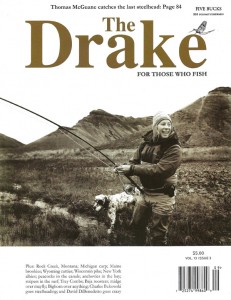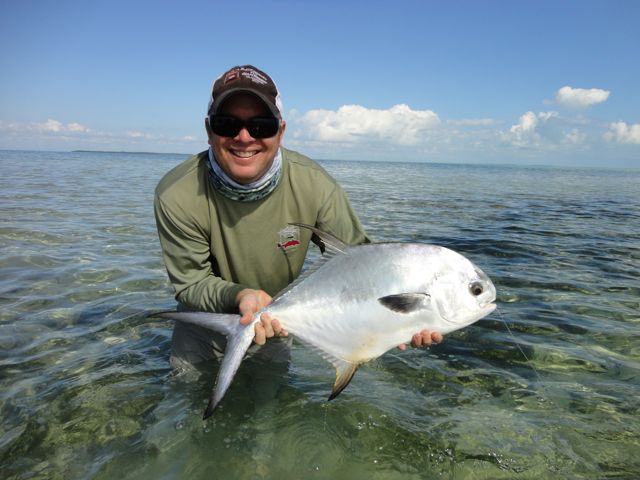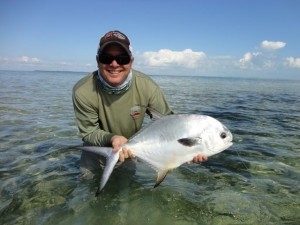An Interview With Tom Bie, Founder Of The Drake Magazine

Monte Burke is a staff writer at Forbes magazine, where he has written more than 100 profiles of chief executives, sports figures and entrepreneurs. Burke has also written for the New York Times, Outside, Men’s Journal, Town & Country, Field & Stream, Golf Digest, The Drake and Audubon.
Burke graduated from Middlebury College with a B.A. in Religion. He grew up in New Hampshire, Vermont, North Carolina and Alabama. He lives in Brooklyn with his wife and two daughters.
But as I grew up, as I got more life and flyfishing experiences under my belt—as I changed, really—my old favorite magazines seemed to stagnate a bit. They were too focused on the “how” and not the “why” of the sport. By age 22, I’d read enough articles about how to double-haul to last a lifetime. In short, I wanted literature.
Then, one day, I stumbled across a thick magazine that called itself The Drake (named after a large mayfly that both trout and anglers find irresistible). In the top righthand corner, where the price is listed, it read: “Five bucks. $10 for bait fisherman.” The mag had attitude, in a good way.
Within, I flipped through page after page of inspired writing, all having to do with the flyfishing “life.” The articles were funny, heartbreaking, ribald. Thankfully, there were no articles about double-hauling a cast or tying a prince nymph. The photographs were different, too. There were none of the “grip-and-grin” shots that had taken over the traditional mags. Instead, they were evocative, indirectly getting right to the heart of the deal, like an Impressionist painting.
The Drake hit me right in the gut. Finally, it seemed, there was a magazine that spoke to my generation, a new and comprehensive take on this sport that I had made central to my understanding of, well, life.
I did some research, and discovered that The Drake had been founded by someone a bit like me. Tom Bie, the editor and publisher of the magazine, was a flyfishing nut, too. He’d been a guide. He’d written and edited for a number of publications. He, too, desired something different in the flyfishing magazine world. So he went and did it himself.
I’ve been a subscriber ever since. In the interest of full disclosure, I’ve also written stories for the magazine. They’ve been some of the most satisfying pieces I’ve ever done.
Yesterday, I emailed Bie 10 questions about the magazine and the flyfishing industry, in an attempt to get to the core of what makes him and his magazine tick. He got back to me right away. Below, the result.
Forbes: You started The Drake in 1998. Why? Did the staid world of fly fishing writing need a shakeup?
Tom Bie: I’m not sure if it was the writing itself as much as what was being published–few profiles, no in-depth reporting, virtually nothing literary outside of Gray’s Sporting Journal. And I put much of that on editors. The problem, as I saw it, was that everything in flyfishing magazines was written for those who HIRED guides, but there was almost nothing for the guides themselves, or for people who already knew how to fish. Plus, I just wanted an outlet for the essay-style writing and creative photography that I knew was out there.
Forbes: You’re coming up on year 15 of the magazine, an impressive mile-marker, especially in this magazine age. How have things changed in the industry and in the magazine since you started?
Bie: I’m in two “industries”–the flyfishing industry, and the magazine industry. The flyfishing industry hasn’t really changed too much, I don’t think. While the magazine industry has changed substantially. But both offer the same thing: an escape. And as long as you make that escape–whether it’s on the front of a flats boat in the Keys or curled up with The Drake on the couch–an aspiration, inspirational, entertaining or educational experience, people will keep coming back to it.
Forbes: What’s your circulation?
Bie: My circulation is still relatively small, at less than 30,000. But many of The Drake advertisers are not in there because of how many people are reading it; they’re in there because of who is reading it. I don’t really like the term “opinion leaders” or whatever, because it sounds too markety-speak, but it’s definitely fair to say that Drake readers are a highly-engaged group. These are not people who “try” flyfishing. It’s what they do.
Forbes: How much longer do you think you’ll go? Ever think about handing it off or selling it? What keeps you going?
Bie: Sure, I think about it. But other than playing shortstop for the Rockies, I cannot imagine anything I’d rather be doing. And I don’t know a lot of people who can say that. What keeps me going is that I love flyfishing, I love traveling, I love meeting interesting people, and I love putting together a good magazine. That and Red Bull.
Forbes: Do you see The Flyfish Journal as competition?
Bie: Sort of, but I’m mostly glad it’s around. The competition part comes because we use a lot of the same writers and photographers, which can sometimes be a challenge. But in general, The Flyfish Journal just helps the sport look cool–an area where many flyfishing magazines before it had failed miserably.
orbes: What’s different about this generation of fly anglers and fly writers?
Bie: Other than an incessant need to film and Facebook themselves, not much. I think way too much is made of the “new generation” of fly fishers or whatever. Just like skiing or surfing or so many other sports, many will claim to be doing something “revolutionary,” only to find out that some old dude was doing it in the 70s with a beer in one hand.
As for the difference in writers, I think now, as always, there are plenty of good writers. But for good writers to become great writers, they need great editors. And great editors are in short supply.
Forbes: How do you view the website? As a complimentary piece? The discussion boards can be rough-and-tumble places.
Bie: How do I view the website? Hmmm… So many answers to that question… “Not in public…” “With my attorney…”
Look, I have not, and never will, try to defend the “appropriateness” of The Drake message boards. They are not for everyone. They are rude. They are selfish. They are immature. All true. But here’s what people don’t know: that message board is full of some of the most giving, most generous, most UNselfish people you could ever meet. I cannot begin to tell you the number of emails I’ve received from people–often young 20-something types–who were visiting family or on a business trip to Florida or the Midwest or wherever, and a fellow Drake message board dude took them fishing. And I’m not just talking about showing them a local bass pond or trout stream; I mean taken them out on a flats boat for what would be a $600 day. Just because they knew them from the board. I had a father call to thank me a couple years ago because someone on the message board got his kid a summer job in a fly shop. They host fundraisers, they donate to conservation, and they do a LOT of fishing together. That’s what people don’t get.
Forbes: I often feel that all of us who attempt to write about flyfishing are sometimes just pale imitators of the master of the form, Thomas McGuane. That said, I think with his nonfiction he opened up a whole new form of fish storytelling. Do you feel that way? Are there some writers from the old magazines that you like? Are there some young or new writers that you are particularly proud of publishing/discovering?
 Bie: Yes, I agree: In my book, there is Thomas McGuane, there is David James Duncan, and then there is everybody else. But one of my prouder accomplishments (other than getting McGuane himself to write for The Drake) has been to prod and pull some of the other, older great writers out of semi-retirement–guys like Trey Combs and Doug Rose. It took awhile to convince them, but their voices are so important to the sport. As was recently pointed out to me by John Larison (an example of one of the talented new/young writers): “The Color of Winter” [Rose’s book on winter steelheading Washington’s Olympic Peninsula] is one of the most underrated flyfishing books of all time.”
Bie: Yes, I agree: In my book, there is Thomas McGuane, there is David James Duncan, and then there is everybody else. But one of my prouder accomplishments (other than getting McGuane himself to write for The Drake) has been to prod and pull some of the other, older great writers out of semi-retirement–guys like Trey Combs and Doug Rose. It took awhile to convince them, but their voices are so important to the sport. As was recently pointed out to me by John Larison (an example of one of the talented new/young writers): “The Color of Winter” [Rose’s book on winter steelheading Washington’s Olympic Peninsula] is one of the most underrated flyfishing books of all time.”
Forbes: Talk about the future: What trends do you see in the industry and in the flyfishing writing and photography field? Where would you like The Drake to be in 5-10 years?
Bie: I think you will continue to see an increase in the number of species and the times of year people fly fish. This industry has sometimes done a poor job of highlighting accessibility–which is why people think that flyfishing is something done only in Montana, from a drift boat, in July. Speycasting will continue to grow, in part because it’s so fun to do when done right. Video and film will continue to be an important element, and everyone will continue to compete with the masters: Ben Knight and Travis Rummel from Felt Soul Media. As for the “writing and photography field” I am continually amazed by the amount of young, talented, creative photographers. They continue to make my life easier and the mag better. Good young writers are harder to come by, but they’re out there.
The Drake in 5-10 years? Simple: I want to do more writing and editing, and less of everything else. I’m happy with my “slow but steady growth” model. I’m not in it for the money. I’m in it for the autonomy. And the fishing.
Forbes: Your five favorite fish with two-word descriptors. Go…
Bie:
1) Wild steelhead: the winner
2) Permit: soul crusher
3) Tarpon: powerful beast
4) Native cutthroat: high-country king
5) Largemouth bass: spring savior
[information]
Monte Burke’s New book is a great read: “4th AND GOAL: One Man’s Quest to Recapture His Dream.”
In the book, Monte Burke tells the story of Joe Moglia’s, a titan of the business world (CEO of TD Ameritrade) to being a college football coach, a dream and personal passion he had long deferred. It’s a can’t put it down book. It’s available hard cover at the usual online sources, or better, at you local book store. Burke, in our opinion at Fly Life Magazine.com, is heir to Thomas McGuane as a writer.
It’s also available Kindle and audio.
Here’s a few reviews:
“Gripping and unforgettable.” Jim Nantz, CBS Sports
“This is a book you must read.” Bill Cowher
“A captivating biography.” Publishers Weekly
“A winning story for fans of Friday Night Lights and believers in the American Dream.” Kirkus



